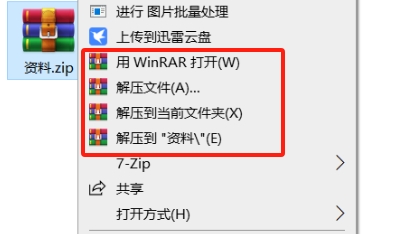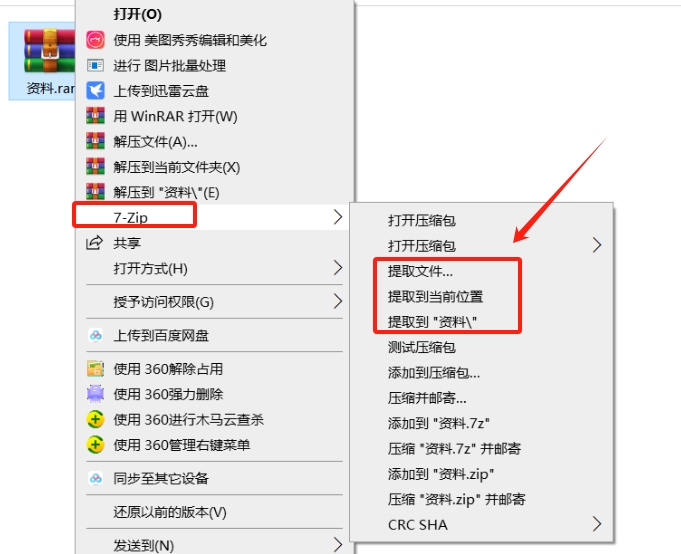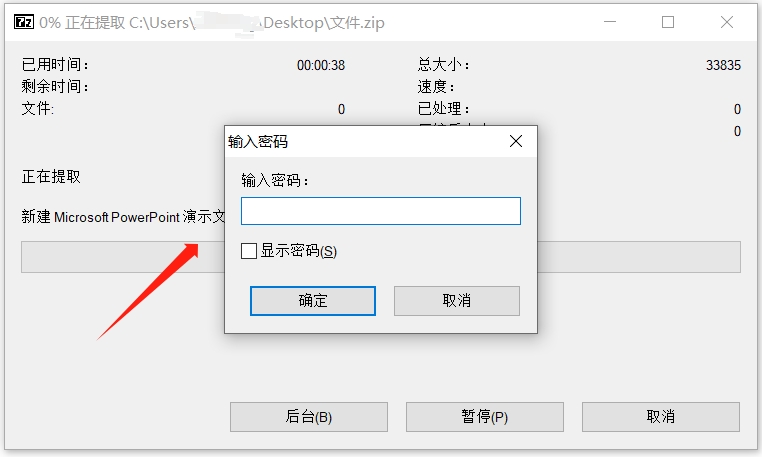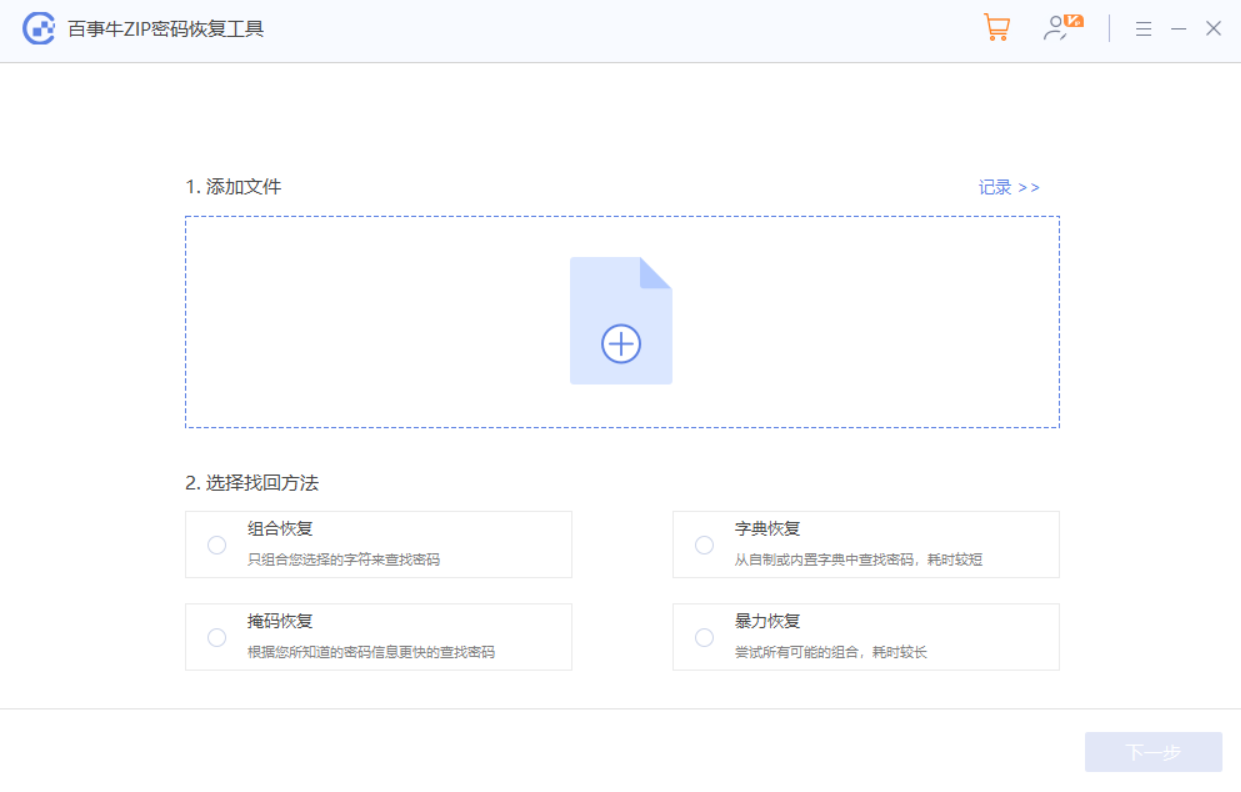How to open a compressed file in ZIP format?
Question: How to open a ZIP compressed file? ZIP is a popular compressed file format, but if we receive a ZIP file, how do we open it correctly? This can be confusing to those who are not familiar with it. Guide to this article: PHP editor Banana will provide step-by-step guidance in this article, introducing you to how to open ZIP files in detail, including the necessary tools, how to open it on different platforms, and some answers to frequently asked questions. Whether you are a Windows, Mac or Linux user, you can easily learn how to open ZIP files.
Method 1: Use the system’s built-in decompression function
Many operating systems have built-in decompression capabilities and support most compression formats. We can directly double-click the ZIP compressed file to open the compressed package and see the contents inside.
Method 2: Use decompression tool
If the operating system does not come with a decompression function, we can use a decompression tool that supports the ZIP format, such as the common WinRAR and 7-ZIP.
After installing the tool, you can also directly double-click the ZIP compressed file with the mouse to open the compressed package.
Of course, we can also decompress the compressed package, put it in the specified folder, and then view it.
If you are using the WinRAR tool, after selecting the ZIP archive, right-click the mouse and you will see several decompression-related options in the WinRAR list.
Select [Extract File] to further set other options, such as the save path after decompressing the file, update method, etc.;
Select [Extract to current folder], which means the decompressed files will be saved in the folder where the compressed package is located;
Select [Extract to "file name"], which means that the decompressed file will be saved in a newly created folder with the same name as the compressed package.
Select the decompression option as needed to decompress the ZIP compressed package.

If you are using the 7-ZIP tool, after selecting the ZIP compressed package, click the right button of the mouse. You can also see 3 decompression options in the 7-ZIP list: [Extract File], [Advance to Current Location], [ Advance to "file name"], the operation represented by WinRAR is the same.
Select the decompression option as needed to decompress the ZIP compressed package.

Of course, if the ZIP compressed file is password protected, no matter which decompression tool is used, you need to enter the originally set password before you can further open or decompress the ZIP compressed package.

What if you accidentally forget the password of the ZIP package? Since the decompression software tool does not have a "forgot password" option, even the person who set the password cannot retrieve the password in the decompression software.
In this case, we might as well try to use the help of other tools.
For examplePepsi Niu ZIP Password Recovery Tool can help us retrieve the "open password" of ZIP compressed files.
The tool provides 4 "retrieval methods". We only need to import the password-set ZIP compressed file into the tool, then select the appropriate method and follow the prompts.

After completing the above operations, just wait for the password to be retrieved.

The above is the detailed content of How to open a compressed file in ZIP format?. For more information, please follow other related articles on the PHP Chinese website!

Hot AI Tools

Undresser.AI Undress
AI-powered app for creating realistic nude photos

AI Clothes Remover
Online AI tool for removing clothes from photos.

Undress AI Tool
Undress images for free

Clothoff.io
AI clothes remover

Video Face Swap
Swap faces in any video effortlessly with our completely free AI face swap tool!

Hot Article

Hot Tools

Notepad++7.3.1
Easy-to-use and free code editor

SublimeText3 Chinese version
Chinese version, very easy to use

Zend Studio 13.0.1
Powerful PHP integrated development environment

Dreamweaver CS6
Visual web development tools

SublimeText3 Mac version
God-level code editing software (SublimeText3)

Hot Topics
 What computer configuration is required for vscode
Apr 15, 2025 pm 09:48 PM
What computer configuration is required for vscode
Apr 15, 2025 pm 09:48 PM
VS Code system requirements: Operating system: Windows 10 and above, macOS 10.12 and above, Linux distribution processor: minimum 1.6 GHz, recommended 2.0 GHz and above memory: minimum 512 MB, recommended 4 GB and above storage space: minimum 250 MB, recommended 1 GB and above other requirements: stable network connection, Xorg/Wayland (Linux)
 Linux Architecture: Unveiling the 5 Basic Components
Apr 20, 2025 am 12:04 AM
Linux Architecture: Unveiling the 5 Basic Components
Apr 20, 2025 am 12:04 AM
The five basic components of the Linux system are: 1. Kernel, 2. System library, 3. System utilities, 4. Graphical user interface, 5. Applications. The kernel manages hardware resources, the system library provides precompiled functions, system utilities are used for system management, the GUI provides visual interaction, and applications use these components to implement functions.
 How to run java code in notepad
Apr 16, 2025 pm 07:39 PM
How to run java code in notepad
Apr 16, 2025 pm 07:39 PM
Although Notepad cannot run Java code directly, it can be achieved by using other tools: using the command line compiler (javac) to generate a bytecode file (filename.class). Use the Java interpreter (java) to interpret bytecode, execute the code, and output the result.
 vscode cannot install extension
Apr 15, 2025 pm 07:18 PM
vscode cannot install extension
Apr 15, 2025 pm 07:18 PM
The reasons for the installation of VS Code extensions may be: network instability, insufficient permissions, system compatibility issues, VS Code version is too old, antivirus software or firewall interference. By checking network connections, permissions, log files, updating VS Code, disabling security software, and restarting VS Code or computers, you can gradually troubleshoot and resolve issues.
 How to check the warehouse address of git
Apr 17, 2025 pm 01:54 PM
How to check the warehouse address of git
Apr 17, 2025 pm 01:54 PM
To view the Git repository address, perform the following steps: 1. Open the command line and navigate to the repository directory; 2. Run the "git remote -v" command; 3. View the repository name in the output and its corresponding address.
 Can vscode be used for mac
Apr 15, 2025 pm 07:36 PM
Can vscode be used for mac
Apr 15, 2025 pm 07:36 PM
VS Code is available on Mac. It has powerful extensions, Git integration, terminal and debugger, and also offers a wealth of setup options. However, for particularly large projects or highly professional development, VS Code may have performance or functional limitations.
 Where to write code in vscode
Apr 15, 2025 pm 09:54 PM
Where to write code in vscode
Apr 15, 2025 pm 09:54 PM
Writing code in Visual Studio Code (VSCode) is simple and easy to use. Just install VSCode, create a project, select a language, create a file, write code, save and run it. The advantages of VSCode include cross-platform, free and open source, powerful features, rich extensions, and lightweight and fast.
 vscode terminal usage tutorial
Apr 15, 2025 pm 10:09 PM
vscode terminal usage tutorial
Apr 15, 2025 pm 10:09 PM
vscode built-in terminal is a development tool that allows running commands and scripts within the editor to simplify the development process. How to use vscode terminal: Open the terminal with the shortcut key (Ctrl/Cmd). Enter a command or run the script. Use hotkeys (such as Ctrl L to clear the terminal). Change the working directory (such as the cd command). Advanced features include debug mode, automatic code snippet completion, and interactive command history.






